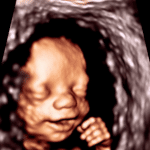Fitness during and after pregnancy is essential for both mental well-being and physical recovery. As more women are looking for safe, effective ways to stay active during their pregnancies and regain their strength afterward, the focus has shifted towards low-impact workouts that promote overall health without putting unnecessary strain on the body. Postpartum workouts, in particular, play a crucial role in rebuilding strength, improving mood, and facilitating recovery. This article explores the benefits of tailored fitness regimens for pregnant and postpartum women, emphasizing exercises that are gentle yet effective.
Why Low-Impact Workouts Matter During Pregnancy and After Birth
Pregnancy brings about significant changes in a woman’s body. As the body adjusts to these changes, it’s essential to approach fitness with care. Low-impact workouts offer a gentle alternative to more strenuous exercises, ensuring that women can stay active without risking injury or overexertion.
During pregnancy, exercise can help manage weight, reduce the risk of gestational diabetes, and even improve sleep patterns. Low-impact activities like walking, swimming, and stationary cycling are great ways for pregnant women to stay active. These exercises increase circulation, strengthen muscles, and help manage discomforts like lower back pain and swelling. They also encourage the release of endorphins, which can positively impact mood and overall well-being.
After birth, the focus shifts to recovery and rebuilding strength. Many women experience weakened muscles, especially in the core and pelvic floor, due to the physical demands of pregnancy and childbirth. Low-impact exercises are gentle on the body while helping to rebuild muscle strength, improve flexibility, and restore posture.
Postpartum Workouts: Rebuilding Strength and Confidence
Postpartum workouts are an essential part of a woman’s recovery. However, it’s crucial to approach these exercises gradually and with patience. Immediately following childbirth, doctors often recommend waiting at least 6-8 weeks before resuming exercise, depending on the individual’s recovery.
Once cleared for exercise, low-impact routines that focus on core strengthening, pelvic floor rehabilitation, and full-body mobility can significantly help with the recovery process. Kegel exercises, for example, are effective for strengthening the pelvic floor muscles, which can be weakened during pregnancy and childbirth. These exercises not only help with bladder control but also support proper posture and reduce lower back pain.
Gentle core exercises, such as pelvic tilts and modified planks, are key for rebuilding abdominal strength. These movements also help correct the effects of diastasis recti, a condition where the abdominal muscles separate during pregnancy. Postpartum women can also benefit from low-impact exercises like yoga, pilates, and bodyweight squats, which strengthen muscles while improving flexibility and stability.
The Benefits of Exercise for Mental Health During and After Pregnancy
The mental benefits of exercise during and after pregnancy cannot be overstated. During pregnancy, hormonal changes, physical discomfort, and emotional shifts can contribute to anxiety and stress. Engaging in regular physical activity can help manage these feelings by releasing endorphins that improve mood and promote relaxation.
Postpartum depression is another concern for many women after childbirth. Research shows that exercise can significantly reduce symptoms of postpartum depression by promoting mental well-being and increasing energy levels. Low-impact activities like walking or swimming, along with more mindful practices such as yoga, can help new mothers feel more centered and calm, both mentally and physically.
Incorporating exercise into daily routines can also help with self-confidence. Many women experience body image concerns during pregnancy and after childbirth. Exercise can play a vital role in helping women reconnect with their bodies, gradually rebuild strength, and feel empowered.
Tailoring Your Postpartum Workout Routine
Every woman’s postpartum journey is unique, and workout regimens should reflect individual needs and preferences. Some women may want to focus on strength building, while others may need more emphasis on flexibility or aerobic conditioning. Consulting a healthcare professional or a certified trainer specializing in postpartum fitness can provide personalized recommendations.
A balanced postpartum workout routine typically includes:
Core exercises: Gentle but effective moves like bridges, bird-dogs, and modified planks to rebuild abdominal strength.
Pelvic floor exercises: Kegel exercises and pelvic tilts to promote pelvic health.
Cardio: Walking, light cycling, or swimming to increase circulation and stamina.
Stretching: Incorporating yoga or Pilates to improve flexibility and maintain mobility.
It’s essential for new mothers to listen to their bodies and avoid pushing too hard, especially in the early stages. Rest and recovery are just as important as exercise, and taking the time to recharge mentally and physically will contribute to long-term health and well-being.
Building a Routine That Works for You
Creating a workout routine that fits into the busy life of a new mom is one of the biggest challenges. But with the right plan, fitness can become an enjoyable and empowering part of daily life. Many women find that exercising with a postpartum workout group or a friend can make the process feel more manageable and enjoyable. Alternatively, online classes and apps designed for postpartum fitness offer the flexibility to work out at home during nap times or after the baby is asleep.
Gradually increasing the intensity of workouts as the body recovers helps prevent injury and keeps fitness routines sustainable. Building strength, flexibility, and confidence takes time, but by committing to a gentle, low-impact routine, new mothers can feel empowered and better equipped to navigate the demands of motherhood.









